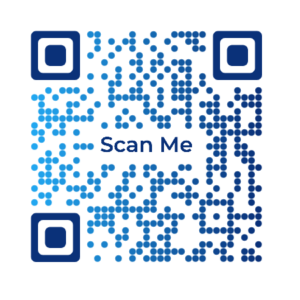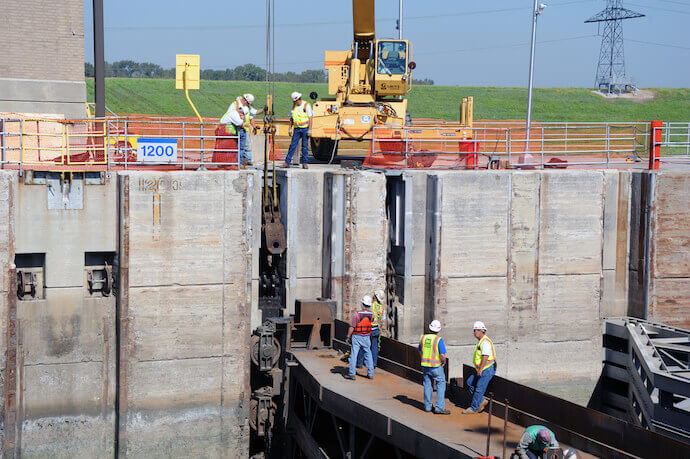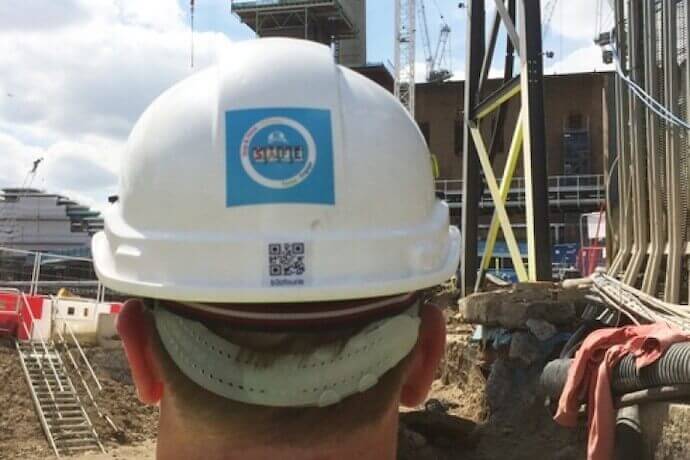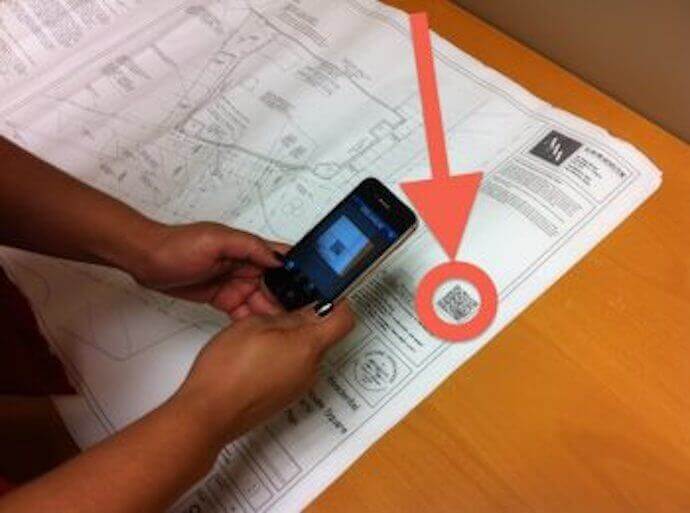Engineering is not an easy job to handle. As an engineer in any field, you face a couple of challenges.
Theft of equipment at work is not uncommon in your sector. Hence, tracking and shipment of equipment is one of the major problems you face.
Plus, as an engineer, your work is prone to disasters such as fire outbreaks. And to handle such moments of crisis, it becomes important to provide emergency contacts and safety procedures handy to workers on job sites. But how do you go about it?
Another challenge you face is proper identification of workers. That is, given the working conditions, it becomes important to have genuine information such as expertise and safety training of each and every worker.
Lastly you give on-site training to every worker, but still unwanted injuries are common. So, you are looking for a way to provide training sessions handy to workers. And this way, beef up worker safety at the engineering site.
And the good news is that QR Code technology can resolve all these challenges. QR Codes are easy to use, affordable, modern, and tech-savvy.
The best part is that engineers across different branches, such as biotechnology, civil ,and aeronautical, are already using it.
Keep reading to know how you can use it.
A. Know about QR Code technology
QR Codes are 2D barcodes that are easily scannable via a smartphone. They are today being used in almost every field—energy, press/media, sports, finance, amongst others.
The main advantage of QR Codes is that they can link unlimited information. You can encode both text based and multimedia content in a QR Code.
Plus, with Dynamic QR Codes, you can track scanning activity. Plus, the content encoded in Dynamic QR Codes is not permanent. So, you can update them whenever need be.
Another thing is that QR Codes are damage resistant. So if placed in an environment such as mining fields that involve wear and tear, they will still be scannable. This is due to error correction that helps QR Codes resist damage upto 30%.
Lastly, you can add design to QR Codes. That is, you can add a logo, a background color, and a background image to your QR Code. And make them look completely branded.

So using QR Codes can prove to be a worthwhile option. They occupy less space and you can easily place them on even the smallest products such as a microchips.
B. Why use QR Codes in engineering
Here are the reasons why you should use QR Codes in engineering:
1. To ensure worker safety

QR Codes can help you avoid accidents and mishaps that happen in handling equipment. You just need to create QR Code and link training videos to it. And paste it on the equipment.
Upon scanning via a smartphone, the workers will be redirected to those videos. This way, you can provide instant guides to workers.
2. Track theft and fraudulent sale
You can create Dynamic QR Codes and get information such as when and where was the QR Code scanned. Plus, you can also get details on the exact GPS location of where a particular QR Code was scanned.
So, with QR Codes, you can receive live updates of the transport and status of the required equipment.
3. Maintain transparency of the product
Many-a-time, you want to give detailed information about the equipment. But the limited space allows you to provide only selective information.
With QR Codes, you can add details such as ownership, destination, and use of that machinery/equipment in current project and timeline of delivery.
Plus, you can use QR Codes for technical documentation. That is, you can encode key information about the equipment such as weight, height, and materials used in its production.
4. Identify workers effortlessly
You can create a personal profile of every worker in the database. In this, you can add details such as their contact information, skill set, and training level.
And then encode all this data in a dynamic Rich Text QR Code. Since it is dynamic in nature, you can also update the information whenever required. And these QR Codes can be placed on helmets which engineers wear.

Source: theconstructionindex.co.uk
When supervisors scan this QR Code, they can obtain all necessary data about the worker. And then accordingly deploy them in their field of expertise.
5. Give a modern look to your work samples
With QR Codes, you can give a modern look to your work portfolio. That is, you can upload your work samples in a QR Code. Or you can simply link the QR Code to your portfolio.

Upon scanning, the contractors can have a look at your work samples. And get all other necessary information quickly.
Now you know how you can make use of QR Codes for your purpose. Let’s move ahead to show branch specific use cases of QR Codes in engineering.
C. Use cases of QR Codes in different engineering fields
In this section, we will tell you how you can use QR Codes in four engineering fields—civil, chemicals, mechanical, and electrical engineering.
1. Civil Engineering

As a civil engineer, here is how you can use QR Codes:
a. You can place a QR Code on construction equipment, linking it to additional information.
For example, a Chinese property developer, Country Garden Holdings, started using a QR Code system. The aim was to increase efficiency and quality of work at the construction site.
The company has placed a QR Code on every bag of construction material. Upon scanning via a smartphone, workers can learn more about the material. The company’s goal is to improve the decision-making skills of the workers and reduce accidents and mishaps.
Also read: QR Codes in construction
b. As a civil engineer in the mining industry, you can use QR Codes to better track shipments of metals, from mines to factories worldwide.
For example, Minespider, a mining company based in Germany has used QR Code labels on gold ingots, pallets of tin, or truckloads of tantalum and tungsten. Upon scanning, the manufacturers can get proof that their metals come from peaceful mines from Peru. And not from rebel-ruin mine from Congo.
“With QR Codes, we proved that end-to-end traceability is possible at scale,”
—Nathan Williams, Chief Executive Officer, Minespider
Plus the manufacturers can get details about the shipment such as origin, weight, and purity. Besides, they could see the photos and signatures of the people who have handled the metal.
This way, as a civil engineer, you can create QR Code labels for more efficiency in work.
2. Chemical Engineering

In this branch of engineering, you can use QR Codes for the following purpose:
a. With QR Codes, you can manage the inventory of chemicals efficiently. Since QR Codes occupy less space and are damage resistance, they can help in managing and tracking chemical inventory easily.
Also read: QR Codes in cosmetics industry
3. Mechanical Engineering

As a mechanical engineer you can use QR Codes on machinery. Here is how:
a. You can place a QR Code on machinery to guarantee that they are maintained and repaired regularly. This will ensure timely updates on repair work and a safe working environment for the workers.
For example, big companies such as RCS Grading uses QR Code technology on their fleet of vehicles. This is done to ensure that vehicles remain in perfect working condition and the job is done correctly.
4. Electrical Engineering

Since your branch has to do with technology of electricity, it is important to keep engineers properly trained and safe. Here is how QR Codes can help:
a. You can link QR Codes to training videos on electrical equipment. And place these QR Codes at different spots in the work station. Upon scanning, the engineers will be able to get the necessary information.
For example, Cambrian College, Ontario, uses QR Codes, which link to training videos and help guide students. The QR Codes are placed on the pieces of equipment in the lab.
Upon scanning, students can gain necessary information such as how a piece of equipment needs to be calibrated. This way, unwanted mishaps have been reduced to much extent.
With QR Codes, students were able to get the information instantly without the fear of being judged by peers or calling attention to themselves. The technology helped in reducing information gaps at work by keeping the students fully informed.
—Serge Levesque, Electrical engineering professor
So, big names in the engineering sectors are now using QR Codes. The result is—more efficiency, transparency, and a safer work environment.
Given your branch of engineering, you can create and place QR Codes at your workstation. And resolve challenges you are currently facing, the smart and sustainable way.
Now, as you move ahead to create QR Codes, let’s tell you some of the best practices you need to keep in mind for best results.
D. QR Code—Best Practices
Here are some of the best practices, which will help you create QR Codes flawlessly:
1. Always add CTA element
It is important to inform the end users of what they will exactly get upon scanning the QR Code. That is, add a help note with every QR Code. Just a simple line such as ‘Scan to watch training video’ will help.
2. Export in vector format
Vector images are high-resolution images. They do not pixelate when scaled. Hence, you can easily place a QR Code on a large machinery such as bulldozer without compromising on QR Code image quality.
Common vector formats are SVG, PDF, EPS, and PS.
3. Add design to QR Code
A customized QR Code can prove important when you place it on your portfolio. Here, they will act as a point-of-engagement and create a positive impression on the contractor.
So, you just read a comprehensive guide of how QR Codes in engineering can prove efficient. Create QR Codes now and make the maximum use of smartphone technology.
[cta1 caption=”QR Codes in engineering” content=”Create a visually-appealing QR Code for your use case” buttontext=”Create QR Code now” destination=”https://scanova.io/design-qr-code-generator.html?utm_source=smb_sd_qr-codes-in-engineering_bod&utm_medium=blog&utm_campaign=content#/chooseqr/” image=”https://scanova.io/blog/wp-content/uploads/2016/12/qrcode-8.png”]